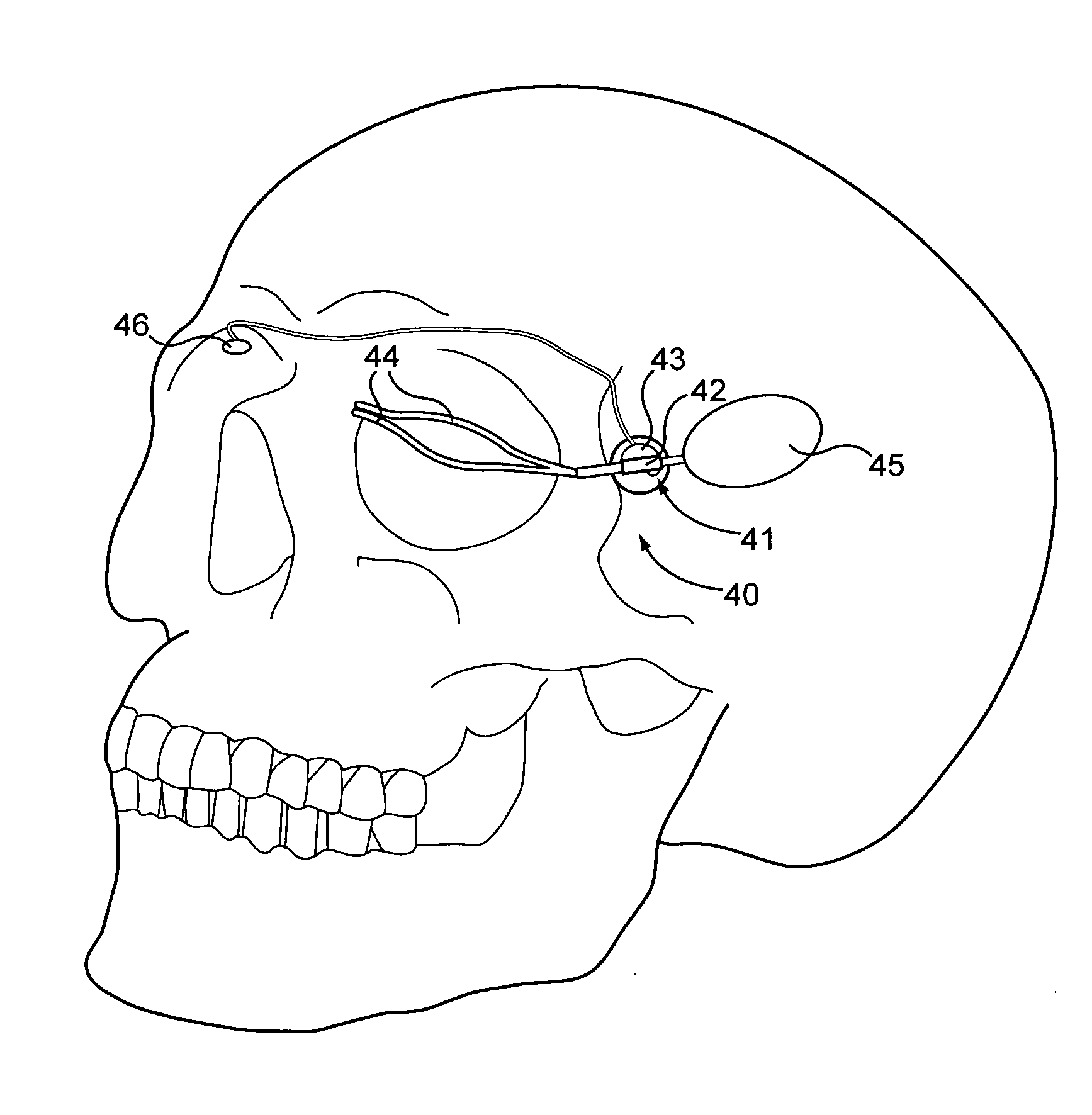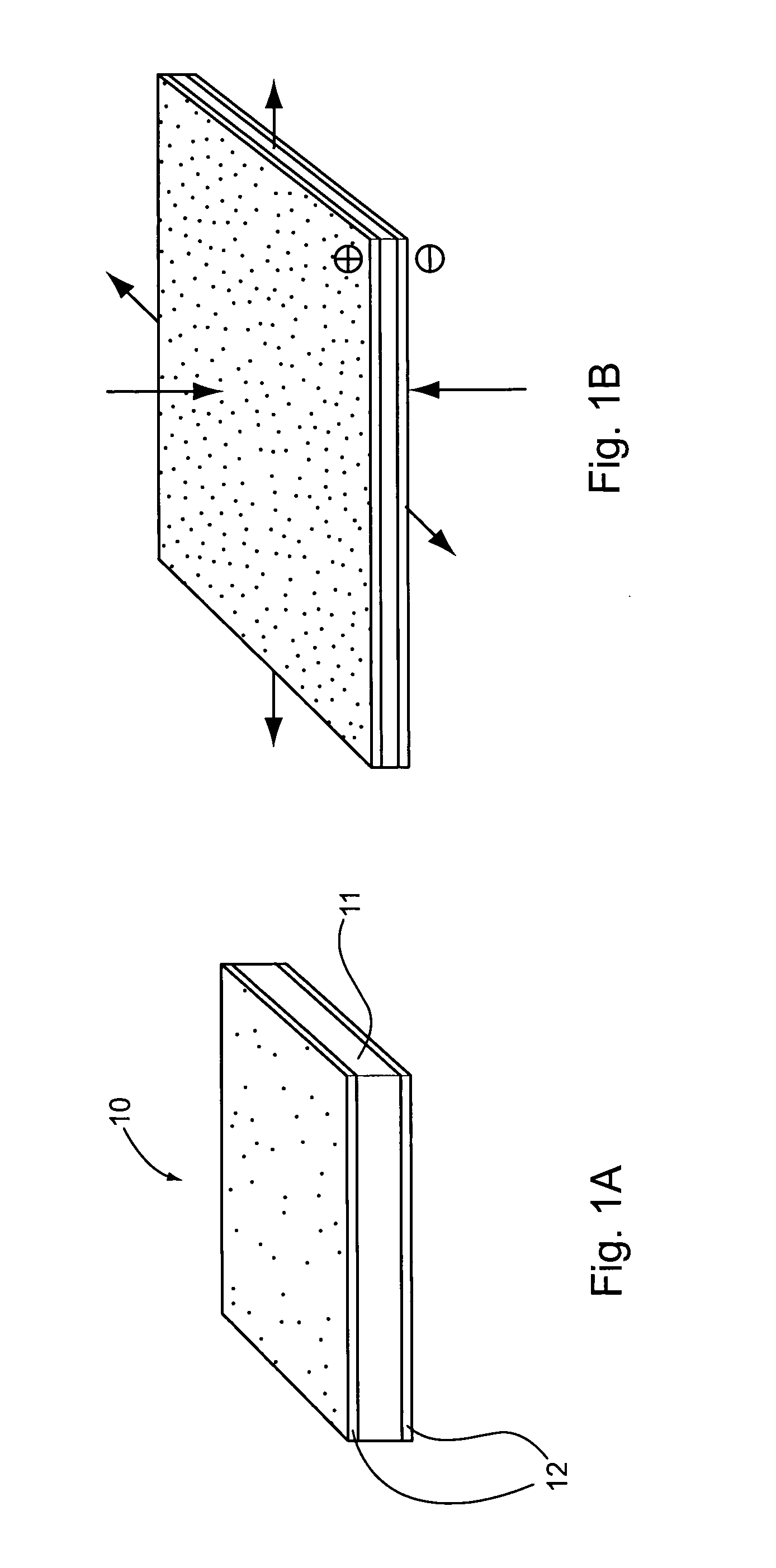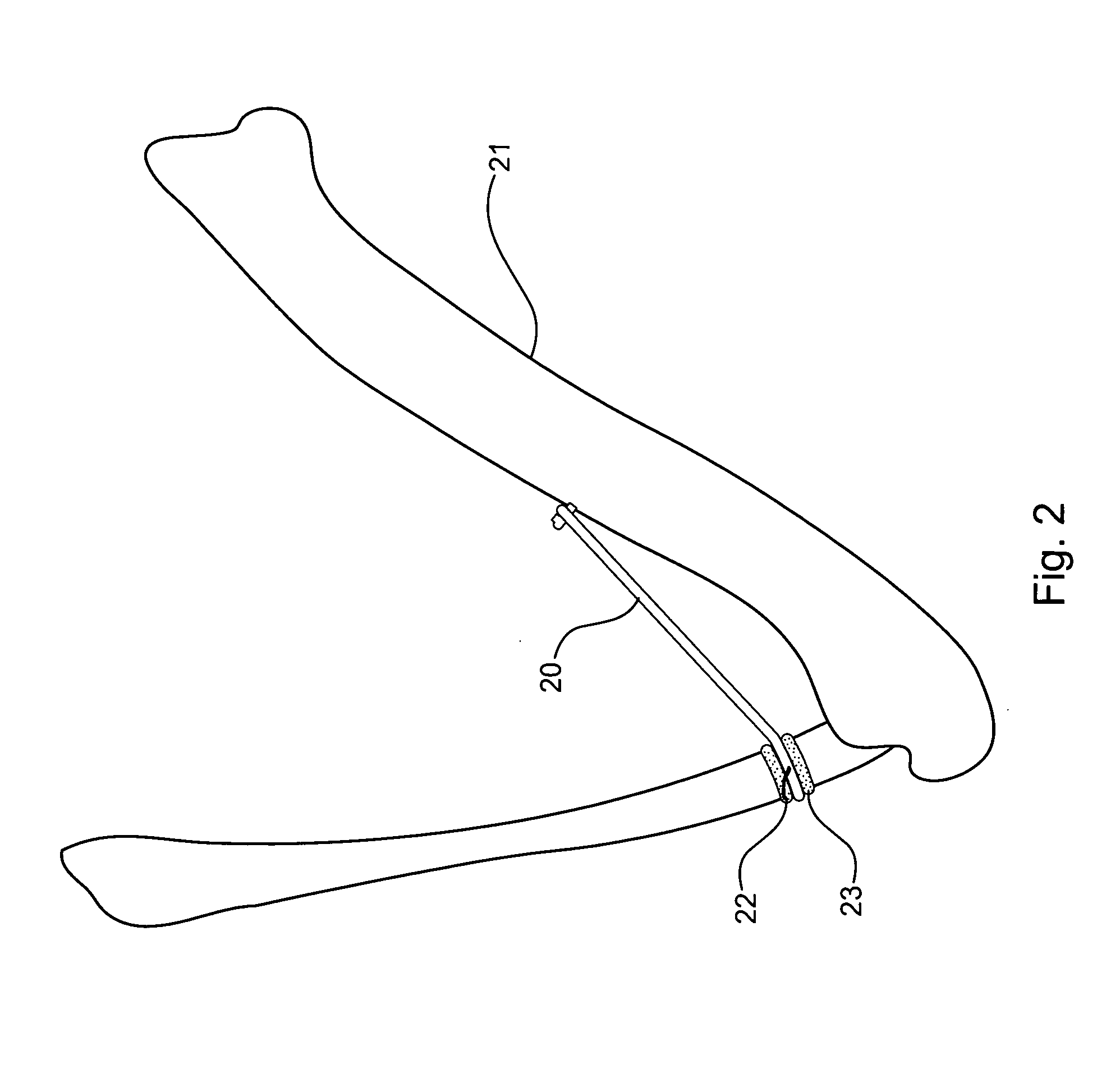Electroactive polymer actuation of implants
a technology of active polymer and implants, applied in the field of active reconstructive prosthetics, can solve the problems of unsynchronized blinks, ulcerations or blindness of the corneum, harm to self-image and social acceptance, etc., and achieve the effect of improving the function of dysfunctional tissues
- Summary
- Abstract
- Description
- Claims
- Application Information
AI Technical Summary
Benefits of technology
Problems solved by technology
Method used
Image
Examples
example 1
Routing of Slings for Animation of Eye Blinking
[0074]The authors' hypothesis is that a reproducible, long-lasting eyelid blink can be restored in patients with facial paralysis using EPAM. This preliminary study was conducted as a proof of concept to determine if a novel eyelid sling can be implanted to achieve closure of the eyelids of a cadaver.
[0075]Electroactive polymer artificial muscle (EPAM) is an emerging technology that we believe has the potential to be used in rehabilitating facial movement in patients with paralysis. Developed by the Stanford Research Institute (SRI, Menlo Park, Calif.), these electroactive polymers can act like human muscles by expanding and contracting based on variable voltage input levels. We examined the reanimation of smaller muscle groups, such as those responsible for eyelid closure or facial expression. Indications for such rehabilitation may include acquired facial paralysis after oncologic resection or traumatic injury. Other patients that may...
PUM
 Login to View More
Login to View More Abstract
Description
Claims
Application Information
 Login to View More
Login to View More - R&D
- Intellectual Property
- Life Sciences
- Materials
- Tech Scout
- Unparalleled Data Quality
- Higher Quality Content
- 60% Fewer Hallucinations
Browse by: Latest US Patents, China's latest patents, Technical Efficacy Thesaurus, Application Domain, Technology Topic, Popular Technical Reports.
© 2025 PatSnap. All rights reserved.Legal|Privacy policy|Modern Slavery Act Transparency Statement|Sitemap|About US| Contact US: help@patsnap.com



